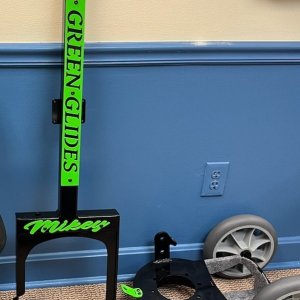Clean Image's questions first, The Polish Pro is really a combination of not just VMC 1 and 2 but also 3.
Tech's use 1 and/or 2 based on the color and density of the marble as well as the experience of the tech using the product. 3 is used on to increase slip resistance and add sealant properties to the stone. They all are used with steel wool. The only time polishing pads or bonnets are used is buff residue left behind.
Polish pro works well on all marbles and travertines. It too increases slip resistance and has some sealant properties. In addition it hardens the floor increasing scratch resistance. Because Polish Pro requires no steel wool there is no sweeping or vacuuming after polishing and you can use high speed burnishers up to 3000 rpm's. Eliminating steel wool saves approximately saves approximately $0.10 per square foot. No mess to clean up and the ability to run up 3000 rpm's also saves time and money.
Polish Pro can be used after powder polishing. I don't believe the polish will be better but it won't be worse. There would be no real advantage in doing both. If slip resistance and/or hardness are priorities then it would be better to go higher with the mechanical polish then use the Polish Pro.
Polish Pro excels on serpentine's and travertines, other limestone's, terrazzo and concrete. I have not seen it change the surface on anything. In fact its polish looks much more natural than the traditional crystallizers.
Thanks Carl.
OK Bill, I have seen that video as well. Fred Houston has been slamming crystallization for at least 15 years. Even though he has admitted to using the method. I think he made the decision at some point to take this crusade against crystallizing to the point he can't back off. The fact is, crystallization has been part of the maintenance industry for dozens of years and will continue to be. It has its advantages and disadvantages and its place in our industry. As does powder polishing. Both methods damage stone when over done. When the maintenance is done correctly both do specific jobs.
I have heard over and over that crystallizer is a wax and when applied the stone is no longer permeable (can't breath and traps moisture). If this were true here are the questions nobody has been able to answer.
1. Why does the stone still react with acids after being crystallized?
2. Why does the stone still need to be sealed after crystallization?
3. Why are we able to still clean grout after crystallizing?
If it were a wax or a coating not allowing it to breath then acid and other spills would not etch or stain it. Right? If it were a wax, wouldn't the dirt and grime become emulsified in the wax or trapped under the coating making it impossible to clean?
As I said, both crystallizing and powder polishing are valuable maintenance methods in our industry. If you do only one you loose out on a very large segment of clientele. Commercially crystallizing is the preferred polishing method over 90% of the time. Why? It is quick, quite, and more affordable. It gives an incredible "WOW" factor as you walk and look forward but not when you look directly down in to the damage. It increases slip resistance and hardness. All important factors in malls, banks, hotels, casino's, airports, stadiums, etc. Not so much in residential settings.
Home owners don't look forward, they look down. The high quality in reflection detail and color that powders offer can not be accomplished with crystallizers. The abrasive, in different forms depending on the type of powder, removes the micro scratches left behind from the mechanical polish. This accompanied with the hotter acids give you that "POP" you've heard about in this forum. Color, clarity and shine is what matters most to Mrs. Smith.
I could give you a list of anti powder "EXPERTS" just as large as the anti crystallizer "EXPERTS". I believe their bias for one or the other comes from an agenda of some kind or just trying to act or sound smarter then the other "EXPERTS" My job is not to be bias or teach from an agenda. My job is to educate on all methods so that you can decide which one works best for you in whatever scenario you find your self in. Me limiting your decision making process limits your ability to succeed. I do not make a dime from thirty to forty hours a month I spend teaching, demoing, or participating in round-tables and seminars. Most "Experts" train to fill their pockets, what happens after you leave is an after thought. Ted Mcfadden and Cameron Dimille are the exception. These two and the few others that give you the tools, all of them, give you great opportunities. Those that teach one way "Their way" and deface all others offer What?
Powder Polish (5X and Diamond Renew) advantages:
better clarity
better color
removes micro scratches
can be done when the surface is wet
"POP"
Powder Polish (5X and Diamond Renew) disadvantages:
More costly
more time and labor
need to use lots of water, extract and neutralize
three step, two man process
Crystallizer (Polish Pro) advantages:
fast
economical
inexpensive
quite
one step, one man process
hardness
slip resistance
"WOW" factor
Crystallizer (Polish Pro) disadvantages:
lower color
less clarity
There is nothing scary about either process Bill. They both are safe and do their job for the situations they are intended for.
Polish Pro and Marble Polish are crystallizers
5X and Diamond Renew are powder polishes.
I hope this help. Happy Easter everybody.

